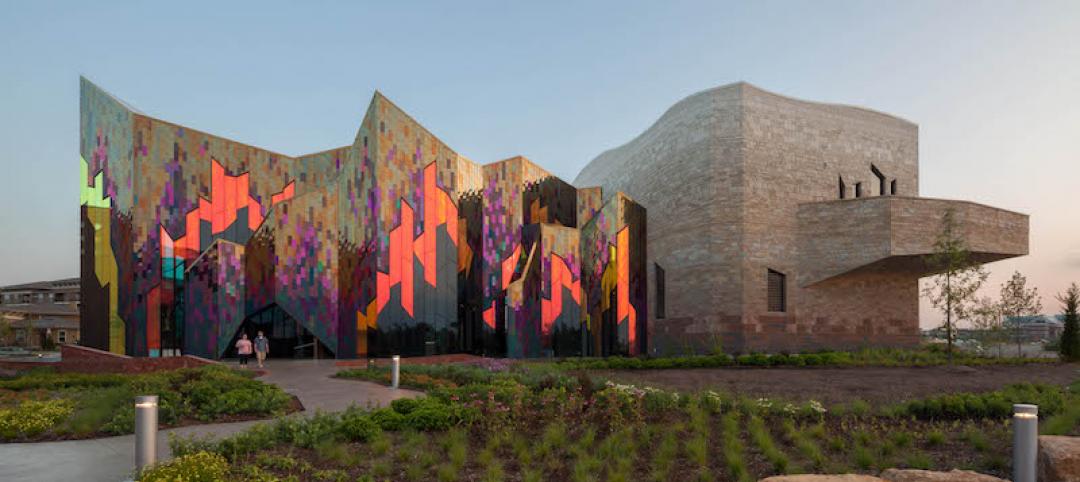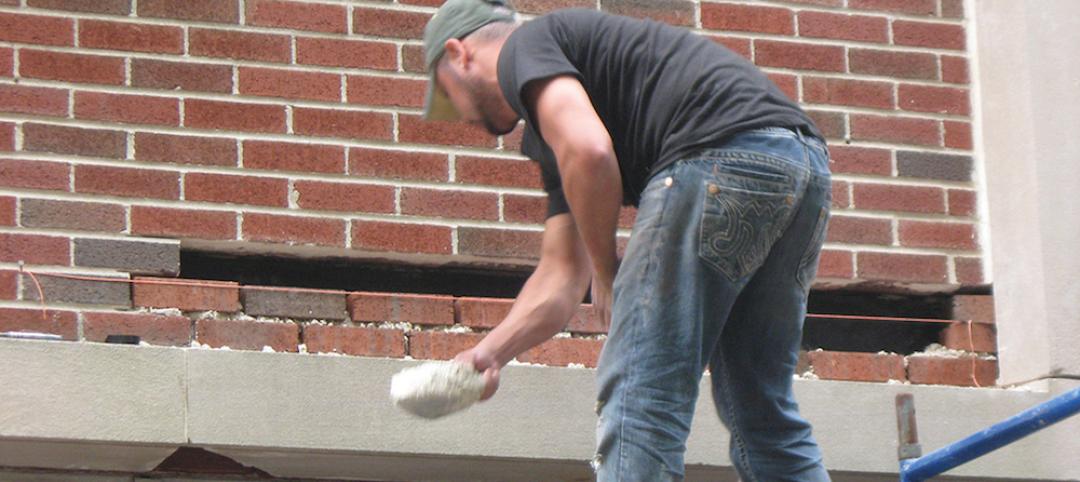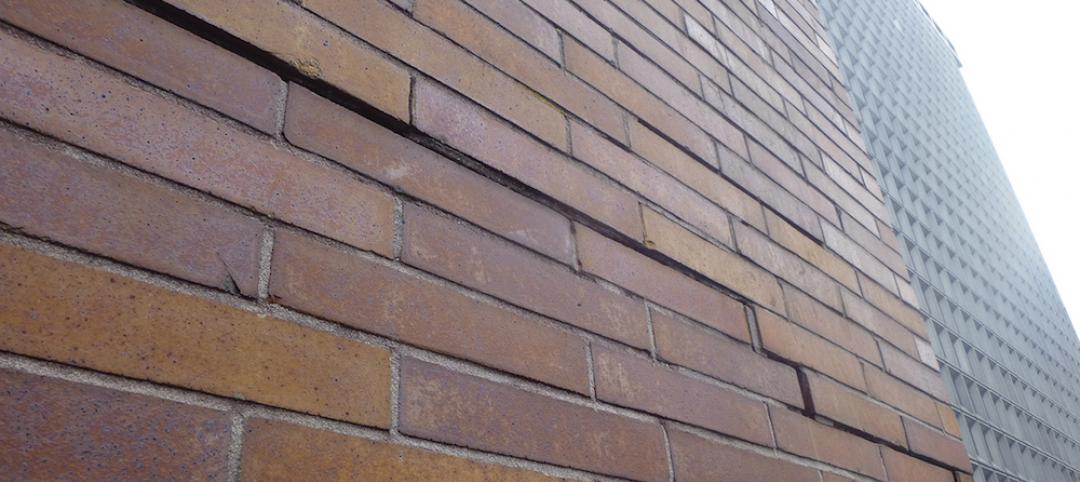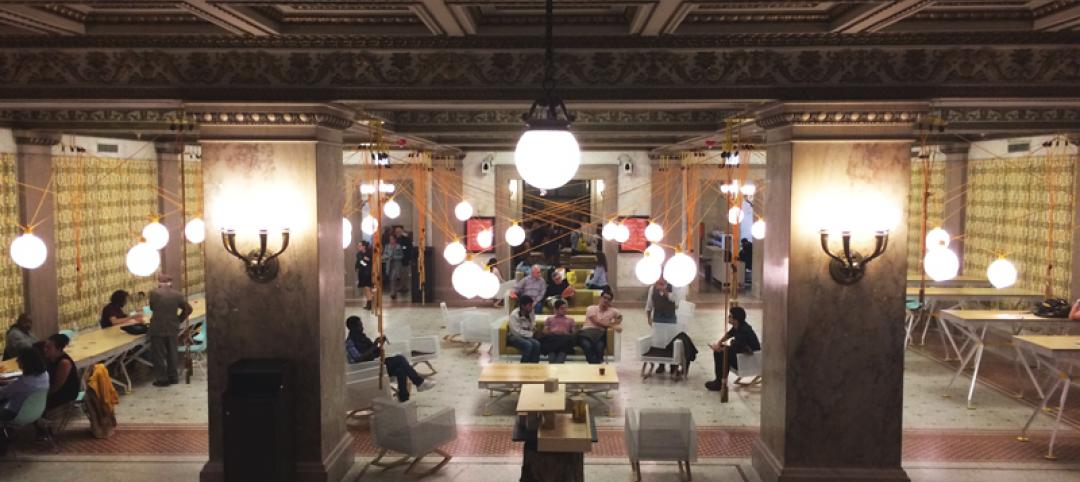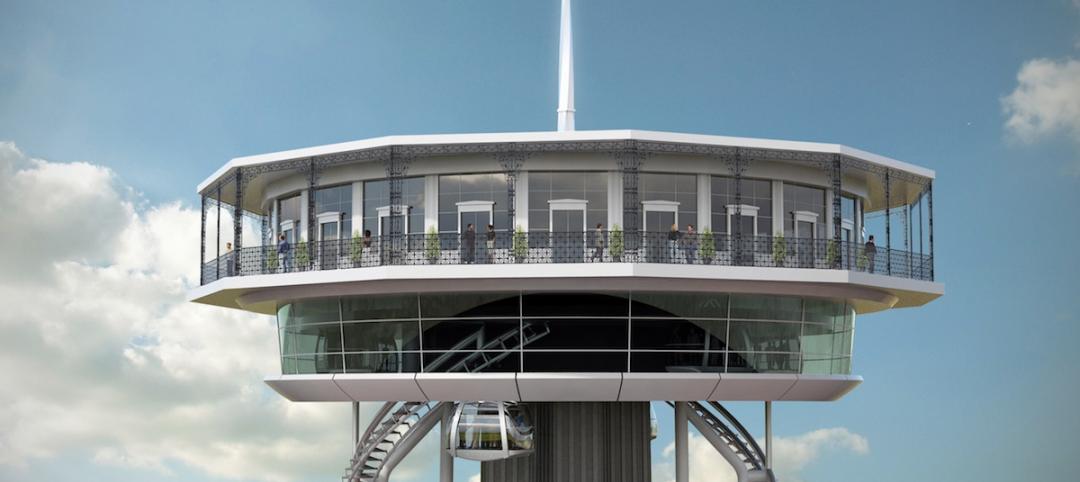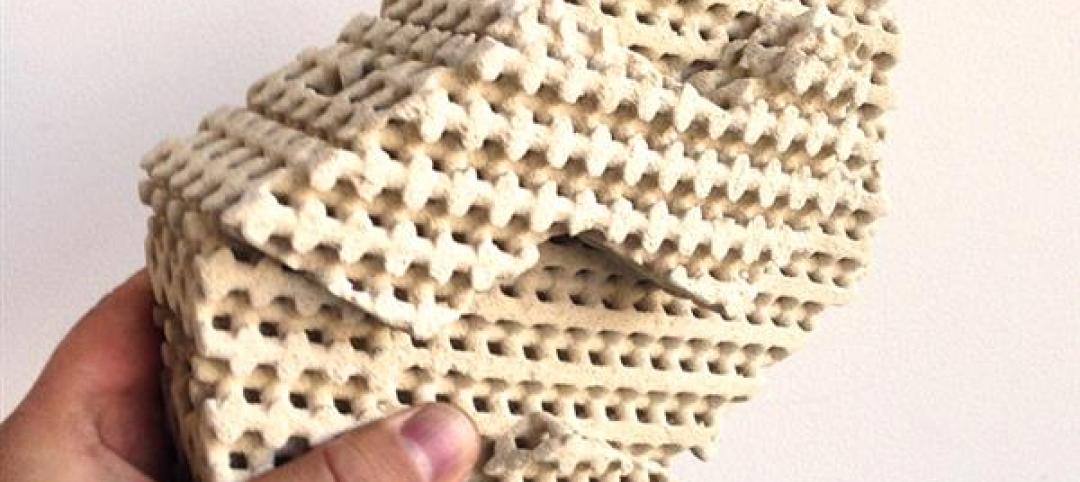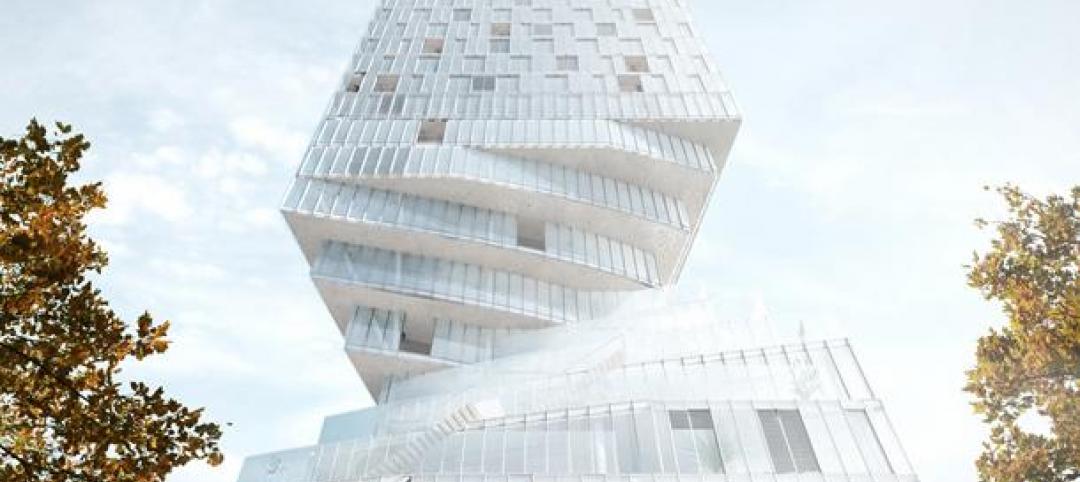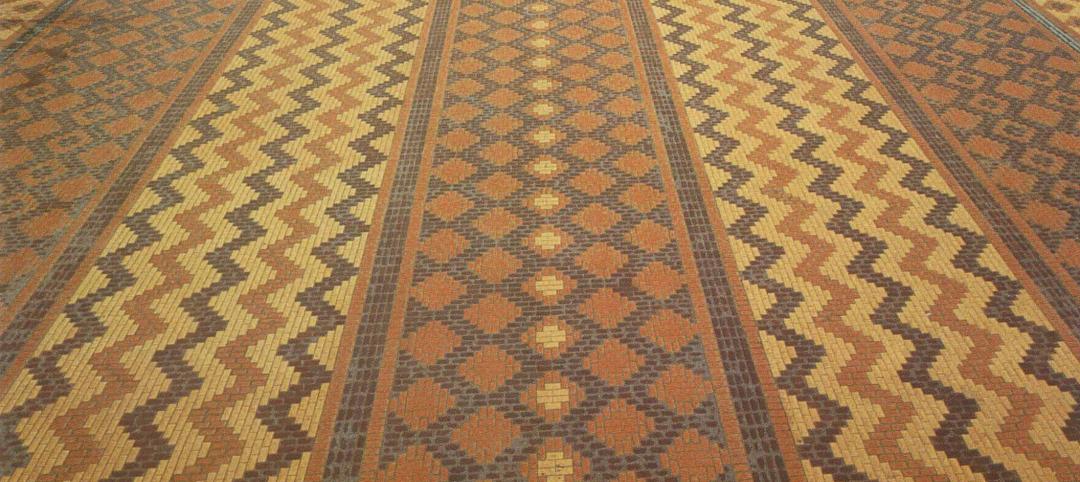Johns Hopkins Hospital operates a dense, urban medical campus in Baltimore with an outsize global reputation. Nestled amid the pioneering clinical and research facilities is the Nelson-Harvey Building, a 1970s-era modernist structure with narrow ribbon windows and long expanses of brick colored to match the nearby Halstead Building and the 1880s Billings Building, a campus landmark with its classic dome.
After opening a major new facility next door, the Zayed Bloomberg complex, the hospital began renovating existing facilities on its East Baltimore campus. The nine-story Nelson-Harvey was a candidate for an interior renovation.
After decades of wear, the hand-laid brick envelope of the Johns Hopkins nine-story Nelson/Harvey inpatient facility began failing. The architectural firms Wilmot Sanz and Ayers Saint Gross needed a solution that met two criteria: one, that is was lightweight enough to prevent any need for additional superstructure or foundation costs; and two, that the facility would be able to stay operational during the exterior renovation.
“Late in the game, during design development, the client determined that we should also address envelope issues,” said Dan McKelvey, an associate principal and building envelope expert with Ayers Saint Gross, describing the existing, hand laid brick façades with a concrete masonry unit (CMU) backup on structural steel. “There were problems including cracking and deflecting brick, and the window system was outdated. The building had no insulation in the wall system, either.”
Factory-applied foam insulation
SLENDERWALL® met the requirements. Its 28 lbs. per square foot specification and unique composite construction allowed for the re-cladding to take place without the removal of the old fascia. The 158 SLENDERWALL panels (27,164 sf) were designed with a factory-applied Endicott brick facing, maintaining continuity with the campus and the original 1970’s exterior.
Johns Hopkins also chose to include factory-applied closed-cell foam insulation and the proprietary H2Out advanced sealant rain screen system with leak detection. The addition of these options provided not only savings in time and on-site trades, but insurance against future air and water infiltrations, as well as continuous insulation adding significantly to the enclosure’s thermal performance and excellent acoustical STC ratings.
The project is being certified under Baltimore City’s Green Stars program, at a level equivalent to LEED Silver. This is the first healthcare project to seek certification under this program.
In March 2013, SMC began delivery to the contractor, Whiting-Turner. Completion of the cladding portion of the project concluded in June. The short schedule showcased the benefits of SLENDERWALL in reduced times and costs for production, shipping and installation, as well as decreasing the need for some on-site trades.
SLENDERWALL architectural precast concrete panel system uses proven technologies to connect a thin layer of fiber-reinforced architectural precast concrete with an interior steel-stud frame ready for drywall application to create a true composite exterior/interior wall. The panels are also available with optional factory-applied continuous closed-cell foam insulation and windows, offering savings in time and on-site labor.
Choosing these along with the proprietary H2Out advanced sealant system, may qualify a project for a no-moisture intrusion guarantee, giving a true one-call responsibility for the building envelope.
For more information:
Easi-Set Worldwide
1-800-547-4045
Fax 1-540-439-2541
info@easiset.com
www.SlenderWall.com
Related Stories
Sponsored | Brick and Masonry | Sep 16, 2016
Stone and fire: The Museum at Prairiefire blends natural stone and man-made masonry to create an architectural icon
The museum tells a story of geology, culture, and the practice of prairie landscape management through intentional burns.
Brick and Masonry | May 11, 2016
Brick primer: Periodic inspection and maintenance for brick masonry walls
Though brick masonry is highly durable, it is still important to conduct regular inspection of the building façade to identify problems and plan to replace old materials.
Brick and Masonry | May 9, 2016
Preventing and treating distress in brick veneer cavity walls [AIA course]
The design, detailing, and installation of brick cavity walls become more demanding as masonry construction becomes more complex. To earn 1.0 AIA CES learning units, study the article carefully and take the exam.
| Jan 28, 2016
AIA CES class: The rainscreen approach to a better building envelope
Building envelope expert Bradley Carmichael of Hoffmann Architects explains how rainscreen wall systems work and evaluates the effectiveness of various rain-control methods, including mass walls, perfect barriers, and masonry veneers. This AIA/CES class is worth 1.0 learning unit.
Architects | Oct 20, 2015
Four building material innovations from the Chicago Architecture Biennial
From lightweight wooden pallets to the largest lengths of CLT-slabs that can be shipped across North America
Cultural Facilities | Mar 13, 2015
New Orleans observation tower to feature 320-foot double-helix gondola ride
Tricentennial Tower will take visitors on a 300-year journey through the city's history before landing them at the top for a 360-degree view of the Crescent City.
Brick and Masonry | Feb 5, 2015
3D-printed 'cool brick' may provide cooling solution for arid locations
Cool Brick is made of porous ceramic bricks set in mortar. The bricks absorb water, which cools the air as it passes through the unit.
Mixed-Use | Jan 26, 2015
MVRDV designs twisty skyscraper to grace Vienna's skyline
The twist maximizes floor space and decreases the amount of shadows the building will cast on the surrounding area.
| Jan 20, 2015
AIA course: Building with brick, stone, and masonry
Earn 1.0 AIA/CES learning units by studying this article and successfully completing the online exam.
| Dec 29, 2014
From Ag waste to organic brick: Corn stalks reused to make construction materials [BD+C's 2014 Great Solutions Report]
Ecovative Design applies its cradle-to-cradle process to produce 10,000 organic bricks used to build a three-tower structure in Long Island City, N.Y. The demonstration project was named a 2014 Great Solution by the editors of Building Design+Construction.


